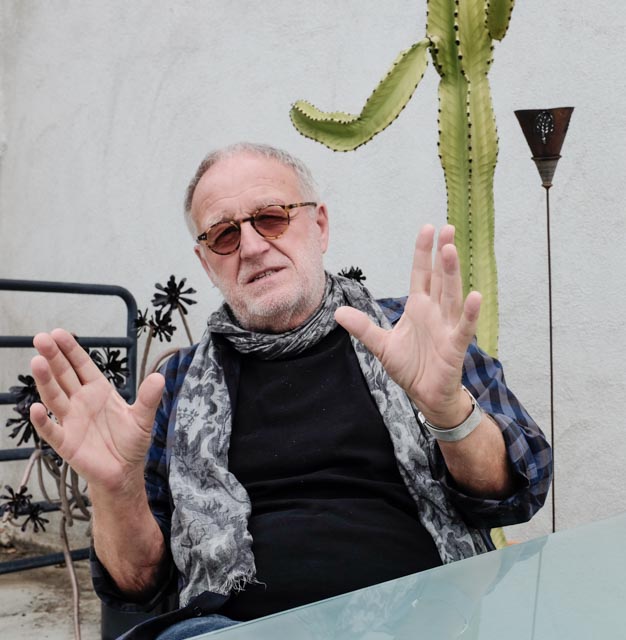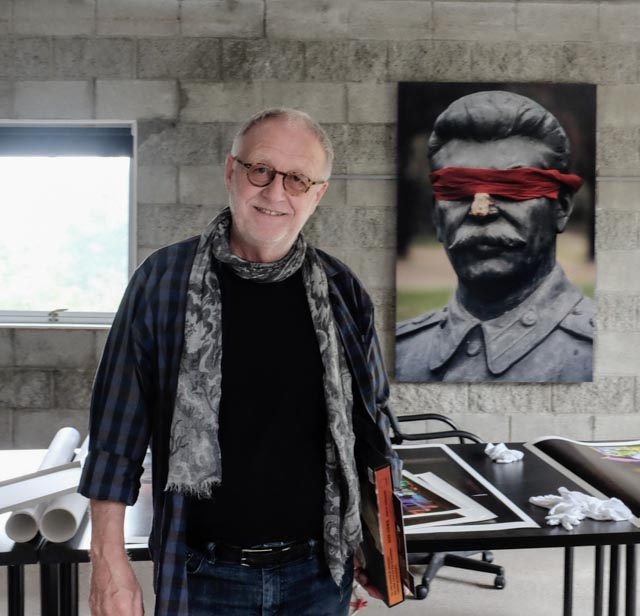A Visit with Photojournalist Gerd Ludwig
Gerd Ludwig is one of the few internationally renowned photojournalists; a member of the core team at National Geographic; founder of Visum, one of the earliest photography agencies in Europe; recipient of the 2006 Lucie Award for “International Photographer of the Year”; and in 2014, he earned the Erich Salomon Award, one of the most prestigious prizes in photography. The man is a legend.
Two of Ludwig’s most notable projects are Broken Empire, a 10-year photo project about life in the former USSR, and The Long Shadow of Chernobyl, a true milestone in photojournalism, which is his reportage over a 20 year span that shares the tragic stories of life overshadowed by a massive disaster.
I recently met with Gerd Ludwig in Los Angeles and had the opportunity to talk with him about his current and future projects.


Along with his assistants, he is currently working on a project called Sleeping Cars. It is an almost romantic story about the seven million registered vehicles in Los Angeles County—and about their “sleeping” habits. Where do L.A. cars spend their nights? Where do they go to rest?
Residents’ garages are often filled with storage, thereby forcing their cars to be parked on the streets overnight. The series shows cars that have a presence. They command their own space. They are mostly loners who shy away from being too close to others. Many sleep under covers, wearing them like nightgowns, though some sleep in the nude. Some take daytime naps, while a few lucky ones sleep in pairs.
In many ways, this reportage exemplifies Ludwig’s work. His stories often expose trivial, sometimes bitter realities, and yet his photographs are never cool, detached documentaries. His images show empathy, and often a trace of humor. It is this contrast between harsh reality and the gentle capture of small details or ordinary scenes that reinforces the messages of his stories.
And Gerd Ludwig teaches photography. The main themes of his workshops are “The Art of Storytelling” and “Digital Vision in Low Light.” Few photojournalists have mastered the art of storytelling through photography as powerfully as Gerd has.
But there is also the technical component of his work. Many of his shots are taken in low light, or with hardly any light at all. Maintaining the authentic feel of a scene while at the same time accentuating important image elements is a key signature of Ludwig’s photography. You really have to look closely to see what is going on technically in these images: faint shadows or subtle brightening in areas reveal that more than just ambient light was used. Gerd achieves these subtle effects with small (and mostly manually controlled) handheld system flashes, which he triggers remotely from his camera while holding the flash at a particular angle and distance from the subject (or he might have an assistant do this).
One would expect that a successful, internationally renowned photographer would slow down at an age at which his old-time school friends in Germany have long since retired. But there is no slowing for Gerd—quite the opposite. When we discussed ideas for a long-term project, I suggested we leave that to the younger generation. Gerd showed no understanding for what he felt was GRB or “German Retirement Behavior.” He continued, “Who knows, we might have 35 more years. That should be plenty of time for any project.”
By Gerhard Rossbach, CEO/Publisher
